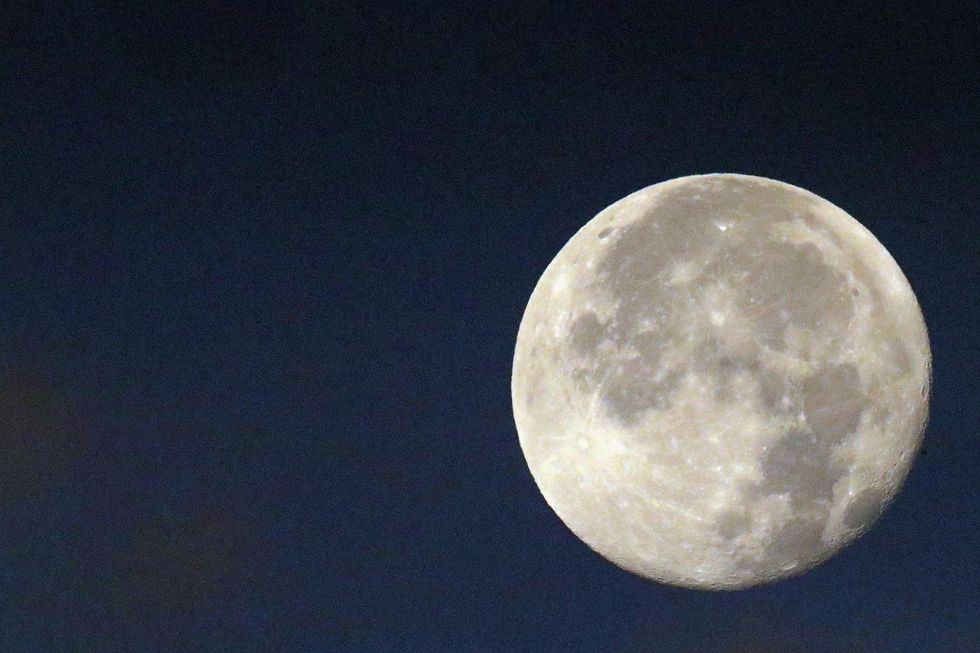
NASA scientists believe that they have discovered water ice on the moon. Here is a close up of the full moon in early morning hours over Mill Pond on July 29 in Centerport, New York. (Bruce Bennett/Getty Images)

NASA announced Monday that scientists have discovered water ice in the polar regions of the moon. This discovery could potentially provide a source of liquid water for astronauts on future missions.
In a news release, NASA's Jet Propulsion Laboratory said that scientists made the discovery using NASA's Moon Mineralogy Mapper, often referred to as M3, an instrument on board India's Chandrayaan-1 spacecraft. The data was collected in 2008 and 2009, before the Chandrayaan-1 went out of commission, but the discovery was made only recently.
The findings were also published Monday in the Proceeds of the National Academy of Sciences.
The scientists observed areas of the polar regions that had the same reflective properties as ice. The M3 instrument also measured the way the substance absorbed infrared light. Water in each of its different phases absorbs infrared light differently.
The temperatures at the spots where the water was located reached a maximum temperature of minus 250 degrees Fahrenheit. For perspective, the lowest temperature recorded on earth was minus 144 degrees Fahrenheit in Antarctica.
Contributing to the cold is the fact that these lunar regions never face the sunlight. While the "dark side of the moon" is a misnomer (both halves of the moon face the sun at some point, but only one side ever faces the Earth), there are impact craters on parts of the moon near its poles that never get any sunlight because of the way the moon is tilted on its axis.
While this wasn't the first time that NASA had announced that there might be water on the surface of the moon, this is the first time the scientists have been sure.
NASA JPL said that the presence of this ice on the surface of the planet meant that "water would possibly be accessible as a resource for future expeditions to explore and even stay on the Moon, and potentially easier to access than the water detected beneath the Moon's surface."